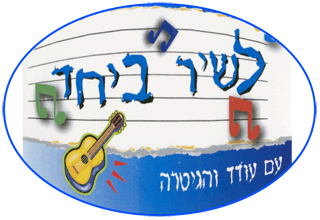The military singing groups are a unique “Israeli” phenomenon.
On the face of it, there is no connection whatsoever between military discipline and uniform on one hand, and popular music on the other.
So, how did it happen? How did those groups come into being?
To understand the development of the singing groups one has to follow the circumstances of the time.
Most armies in the world have big military bands and huge parades. Israel of the late 1940’s and early 1950’s had none of that. What we had were small groups of soldiers on guard duty in remote places.
Hence there was the need to entertain them, and initially the entertainment came from within. Those soldiers who could sing or play an instrument were the entertainment.
This is how the very first teams or in Hebrew “Tzivtei Havai" started. Performing in all conditions, dust, mud or rain, and using vehicle headlights as “stage lights”.
Later on funny sketches were added between the songs, the teams grew in popularity and in number or members, and became groups.
They proved invaluable to morale and enjoyed the full support of the military “top brass”.
During the 1960’s, and in line with the general change in pop music, the groups became more and more sophisticated adding electric guitars, keyboard and percussion. Productions became bigger and bigger and the groups were now entertaining the general population of Israel in large theatres.
The “golden age” of the groups was between the mid 60’s and mid 70’s. There is hardly one Israeli singer who did not come from one of the groups (and there were many).
In fact some group members were already enjoying “star status” whilst still in active service. Also, due to the huge popularity of the groups they were able to attract the best creative talent. We can mention Naomi Shemer, Ehud Manor, Yoram Thar-Lev, Mony Amarilio, Nurit Hirsh, and of course the grand-daddy of the military groups Ya’ir Rozenblum.
In 1978 during the term in office of Refael Eitan (Raful) as Chief Of Staff, the groups reached their peak. Raful claimed that the groups had grown to such size the army could no longer support them, and what’s more, being so complex with so much added equipment they could no longer entertain the troops in the front line.
The groups had shrunk back to performing teams, and still there are current singing stars who served in that role in the army. However, the era of the great military singing groups is now just a famous part of history.
In another chapter I shall discuss the very first groups, the Chizbatron, the Hishtron and Lehakat Hanachal.